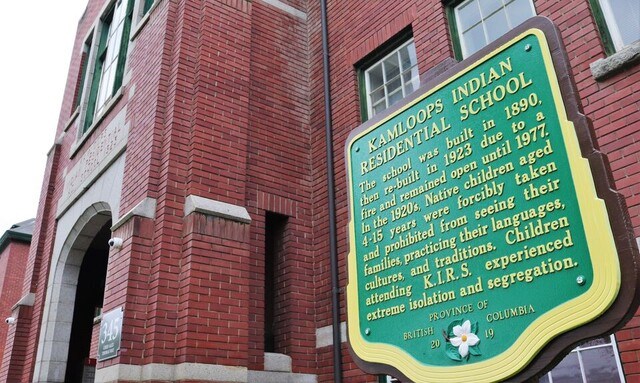The provincial government will provide $12 million for research into gravesites at former residential school sites and as well as for the mental health and cultural supports for First Nations, Premier John Horgan said July 15.
"We are committed to supporting the vital work by First Nations at all residential school sites in B.C.,” Horgan said in a joint statement with Minister of Indigenous Relations and Reconciliation Murray Rankin.
"Each of these children was forever taken from a family and community that loved them,” the statement said. “We acknowledge the pain and share the grief of survivors, their families, their communities and all Indigenous peoples.”
However, First Nations leaders say the dollar value comes nowhere near what it costs for the ground-penetrating radar (GPR) alone, never mind excavation, forensics, family research and other items.
“I would add a couple of zeroes to that,” William Lake First Nation (WLFN) manager of title and rights Whitney Spearing said.
GPR as well as other technologies including drone lidar (light detection and ranging) are going to be used by WLFN as it surveys land looking for graves from the Catholic-run St. Joseph’s school.
She said GPR could cost about a dollar a square metre.
“You’ll soon get to the $12 million without getting into support,” she said.
“No,” said Union of BC Indian Chiefs president Stewart Phillip said when asked it the money is enough.
“We don’t know precisely what it will cost.”
That will become clear as nations across the country work ahead, he said.
Horgan and Rankin said current generations “have a responsibility to continue facing the harmful impacts of residential schools and how the intergenerational traumas inflicted upon Indigenous peoples are felt to this day.”
The announcement came after the Tk'emlúps te Secwépec First Nation at Kamloops said July 15 about 160 acres on the grounds of the former Kamloops Indian Residential School still need to be searched.
On May 27, Tk’emlups te Secwepemc Chief Rosanne Casimir announced 215 graves had been located on the grounds of the school. She said the discovery was made with the use of GPR.
Thursday, GPR specialist Dr. Sarah Beaulieu said upwards of 200 “anomalies” have been located using radar.
It was the finding of a child's rib bone near a former apple orchard on Kamloops school grounds that helped researchers find an unmarked graveyard containing hundreds of remains.
Beaulieu said only exhumation will verify the findings, but she is confident in them.
“These results are as conclusive as GPR allows," she said. "Only forensic investigation with excavation will provide definitive results.”
"We commend the leadership and courage demonstrated by Kúkpi7 Rosanne Casimir, council members and the community as they have worked with their team of legal and technical experts on the Le Estcwéý (The Missing) findings and the next steps,” Horgan and Rankin said. “They are providing a path for the Tk'emlúps te Secwépec people and other First Nations who are grappling with lasting spiritual, emotional, mental and physical trauma – the ongoing legacy of the residential school system.”
They said Victoria would take guidance from First Nations leaders on the work.
Since the Tk'emlúps te Secwépec, the Penelakut Tribe on Penelakut Island off Chemainus announced the finding of more than 160 undocumented graves near the former site of the island’s residential school.
Spearing said the supports needed for Indigenous people as the “Band-Aid” on residential schools trauma is once again torn off would exhaust the $12 million.
It wasn’t just the Catholic church that operated schools across the country, including the 18 in B.C. The Canadian government operated some schools in partnership with the Anglican, Methodist and Presbyterian churches, among others. Some 150,000 Indian, Inuit and Métis children aged four to 16 were forced into the institutions aimed at assimilating them while suppressing their language and culture.
For immediate assistance to those who may need it, the National Indian Residential School Crisis Line is available 24 hours a day at 1-866-925-4419.




